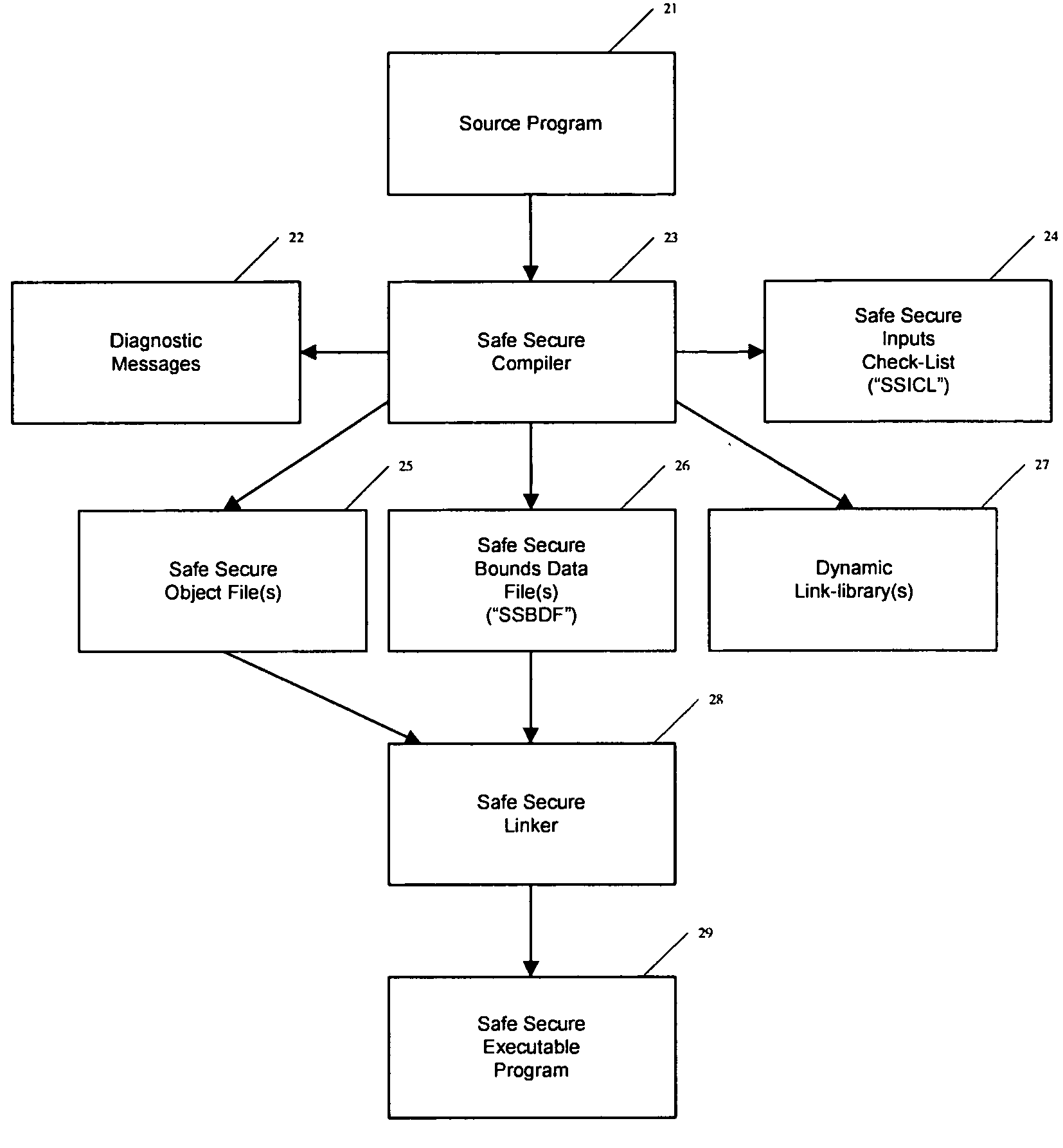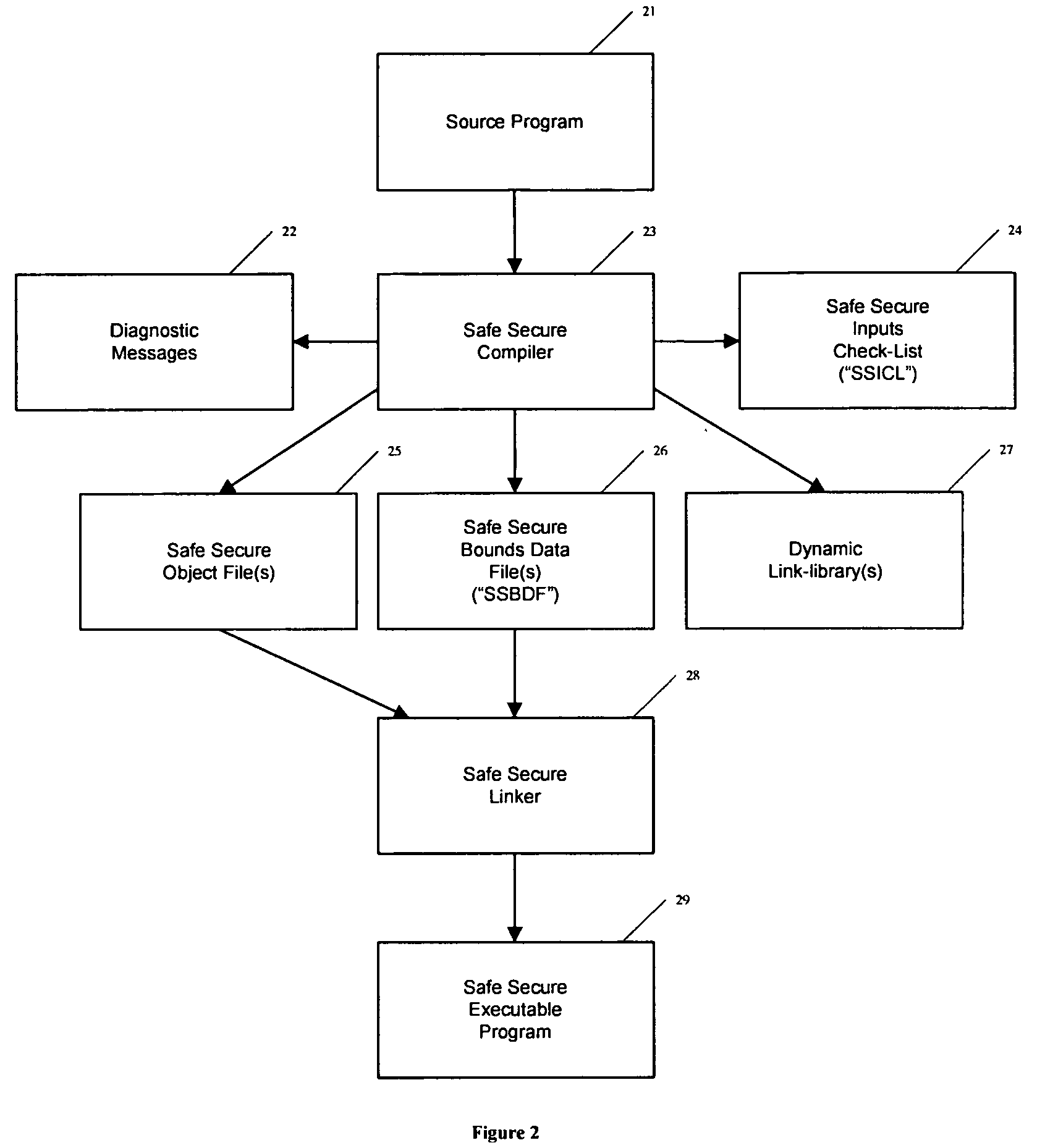Automated safe secure techniques for eliminating undefined behavior in computer software
- Summary
- Abstract
- Description
- Claims
- Application Information
AI Technical Summary
Benefits of technology
Problems solved by technology
Method used
Image
Examples
Embodiment Construction
[0091]FIG. 1 shows an example illustrative non-limiting automated safe secure computer software development system 100. For example, an exemplary non-limiting system 100 may comprise a central processing unit (CPU) 11 coupled to a mass storage device 12 such as a magnetic or other disk. The CPU 11 may execute program instructions including for example a safe secure translator 13 the executable code for which is stored on the mass storage device and executed by CPU 11. When executed by CPU 11, the translator 13, in simplified terms, takes a source code input 14 and converts it to an executable output 15 that can be executed by the same or different computer. The computer system 100 may further include input / output devices 16 such as for example keyboards, pointing devices, display devices and the like so that human software developers can interact with the computer. In one exemplary arrangement, the techniques described herein can be used to enhance a conventional compiler for the C ...
PUM
 Login to View More
Login to View More Abstract
Description
Claims
Application Information
 Login to View More
Login to View More - R&D
- Intellectual Property
- Life Sciences
- Materials
- Tech Scout
- Unparalleled Data Quality
- Higher Quality Content
- 60% Fewer Hallucinations
Browse by: Latest US Patents, China's latest patents, Technical Efficacy Thesaurus, Application Domain, Technology Topic, Popular Technical Reports.
© 2025 PatSnap. All rights reserved.Legal|Privacy policy|Modern Slavery Act Transparency Statement|Sitemap|About US| Contact US: help@patsnap.com



